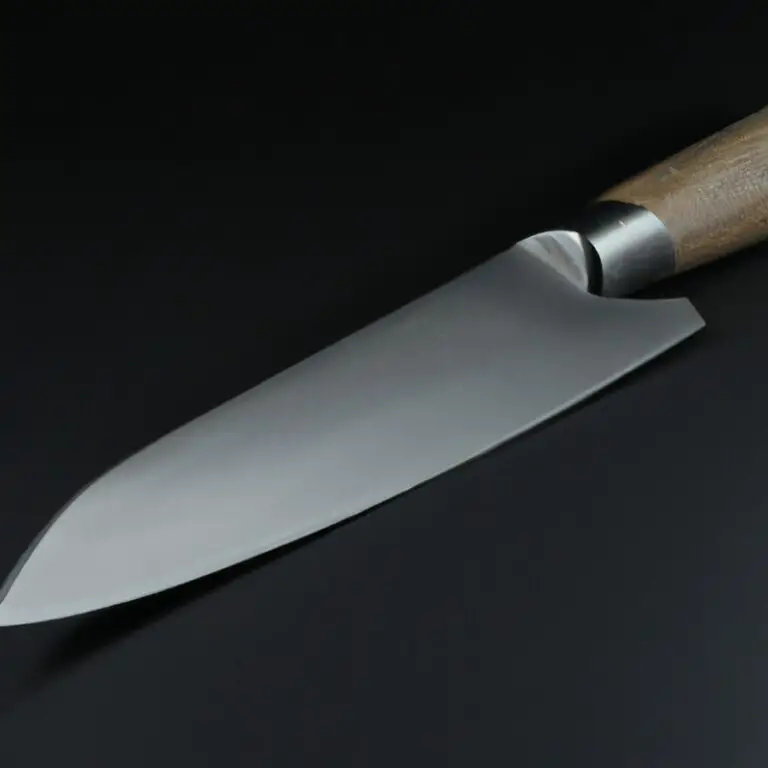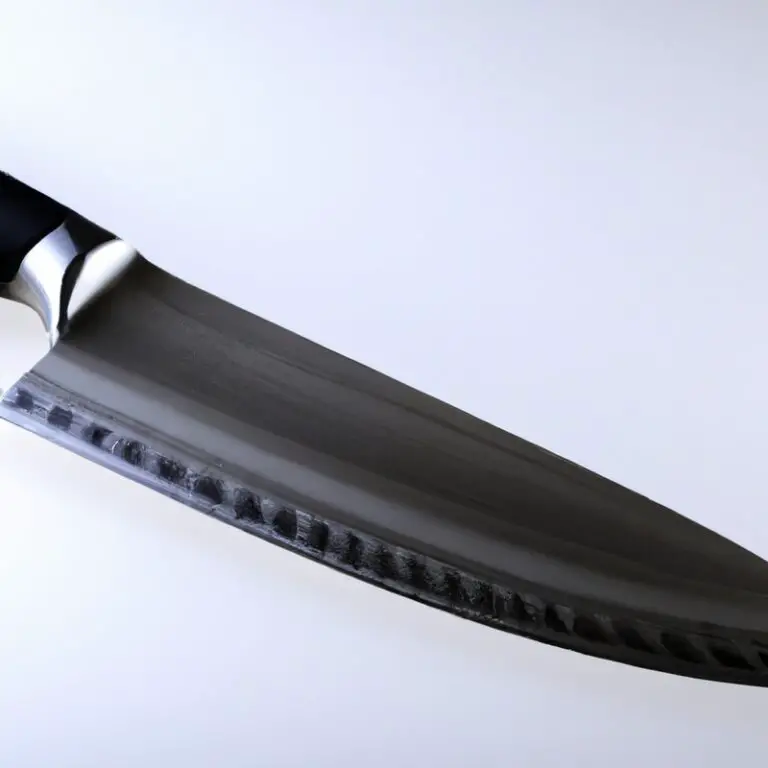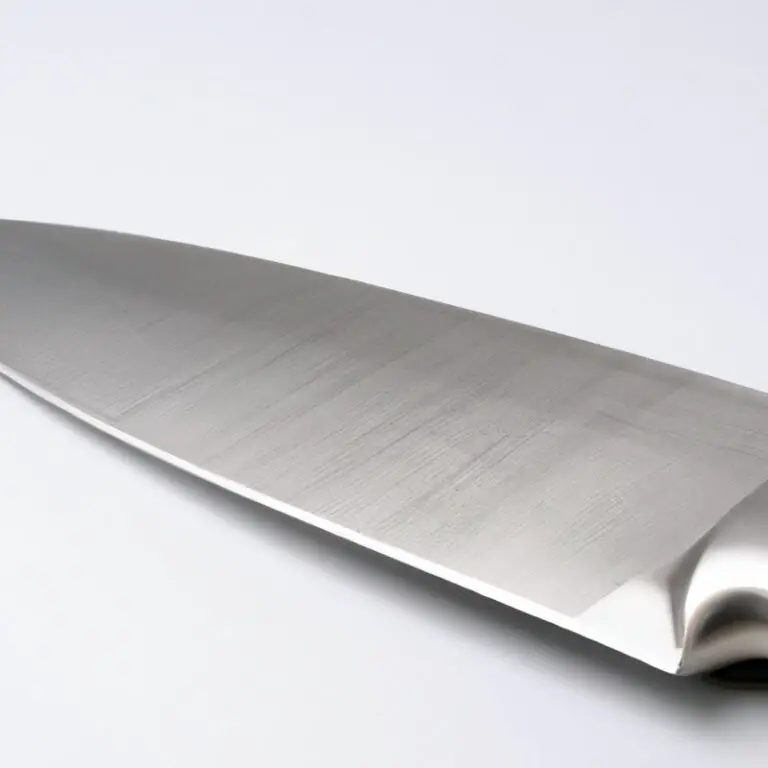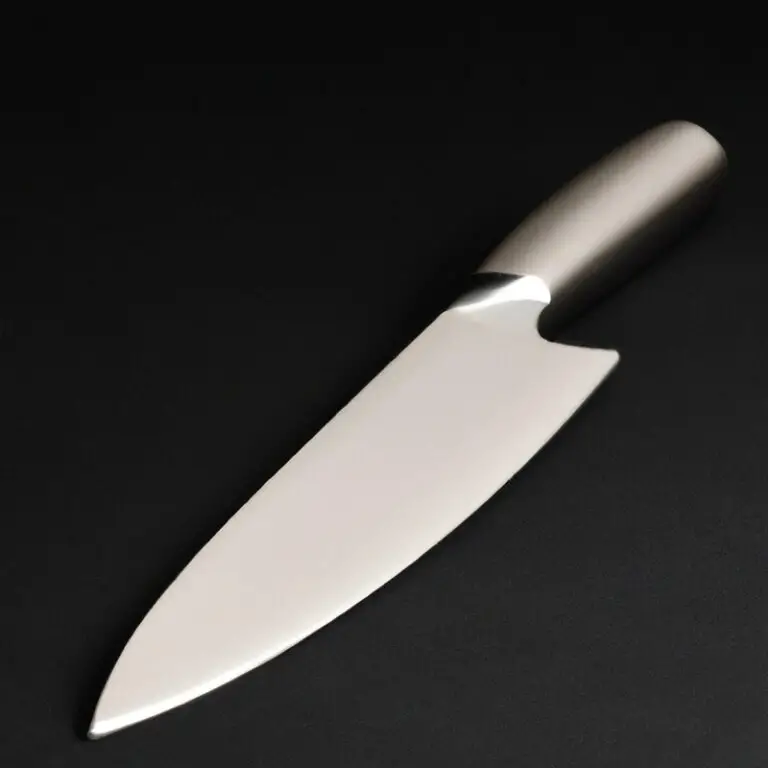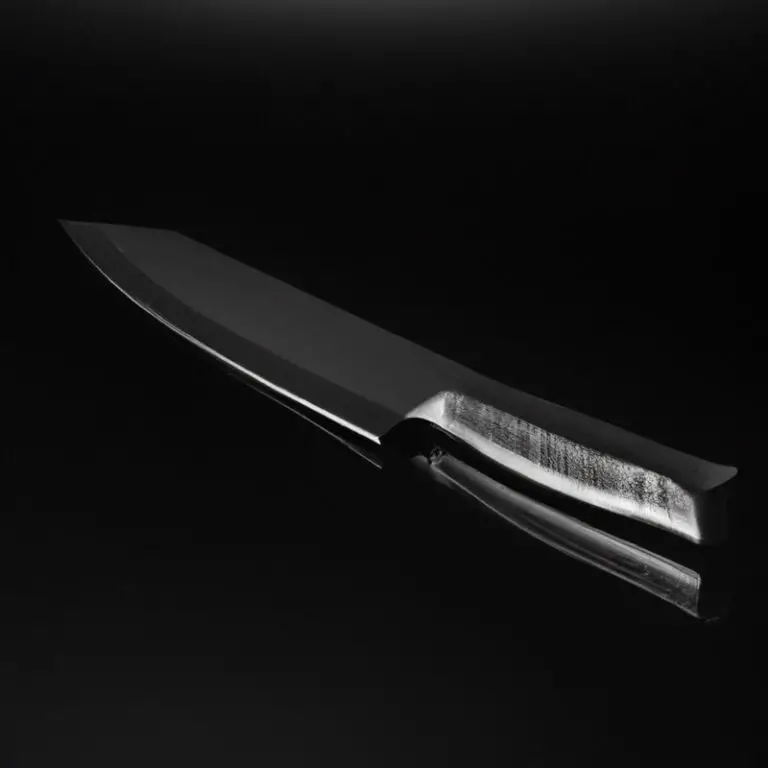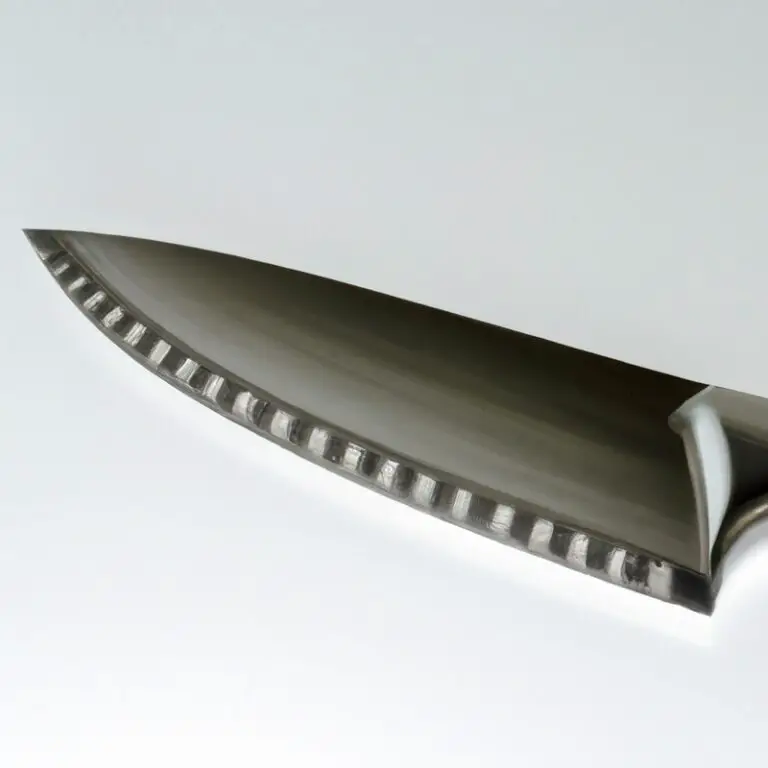Are Santoku Knives Suitable For Beginners? Simplified
Key Takeaways:
- Santoku knives are versatile and easy to handle, making them a great option for beginners.
- The unique design of Santoku knives allows for precision cutting, making them ideal for delicate ingredients.
- Proper handling and maintenance is necessary to utilize the full potential of Santoku knives.
- Proper knife skills and techniques are essential for beginners, regardless of the type of knife they use.
Are you tired of struggling with a dull and cumbersome kitchen knife? Look no further than the Santoku knife.
This Japanese style blade has become increasingly popular in Western kitchens due to its versatility and efficiency.
But is it suitable for beginners? As a seasoned cook and knife enthusiast, I can confidently say that the Santoku knife is an excellent option for those just starting with their culinary journey.
In this article, we’ll explore the benefits of using a Santoku knife, the key factors to consider when choosing one, and how to properly use and maintain this handy kitchen tool.
| Criteria | Pros | Cons |
|---|---|---|
| Size and Shape | Shorter length and flatter profile make it easier to handle and maneuver for beginners | May not be suitable for larger tasks or cutting through denser foods |
| Blade Material | High-quality steel makes for a durable and long-lasting blade | May require more upkeep and sharpening than a softer blade material |
| Price | Often more affordable than traditional chef’s knives | Higher-end Santoku knives can be quite expensive |
| Versatility | Can be used for a variety of tasks, from slicing vegetables to chopping meat | May not be as versatile as a traditional chef’s knife for more specialized tasks |
What is a Santoku Knife and how is it different from other knives?
A Santoku knife is a Japanese knife that is shorter and lighter than a Western-style chef’s knife. The blade of a Santoku knife is usually between 5-8 inches and has a straight edge with a rounded tip.
Unlike a chef’s knife, the Santoku’s blade has a flat cutting edge and a thinner spine.
While both knives are versatile for various tasks, the Santoku knife is particularly beneficial for precise chopping and slicing due to its thinner blade. The flat cutting edge also allows for a more effortless up-and-down motion when cutting.
Another significant difference is the handle.
Santoku knives usually have a traditional Japanese handle, which is round and not as angled as Western-style knives. This design makes it more comfortable to grip and provides better balance when handling the knife.
Overall, the Santoku knife is an excellent choice for beginners due to its versatility and ease of use.
Its smaller size makes it easier to handle and control, and its unique blade design makes it a great option for precise cutting.
The Benefits of Using a Santoku Knife for Beginners
Using a Santoku knife as a beginner brings several benefits.
- Ease of Use: The knife’s size, shape and comfortable handle make it easy to control, reducing the risk of accidents.
- Versatility: Santoku knives work well with a variety of food types and techniques. They are designed to chop, slice, and dice fruits, vegetables, fish and meats.
- Efficiency: The sharp and curved blade of a Santoku knife makes it easier to slice through food, reducing the amount of effort and time required.
- Space-saving: As an all-purpose knife, a Santoku knife can replace other specialized knives in the kitchen, saving space and money.
- Comfort: The ergonomic handle provides a comfortable grip and reduces the risk of hand fatigue during long periods of use.
In summary, Santoku knives are suitable for beginners because they are versatile, efficient, space-saving and designed for easy use and comfort during food preparation.
Understanding the Blade and Its Versatility
The blade of a Santoku knife is typically shorter than a traditional Western chef’s knife, making it lighter and easier to handle for beginners. The blade is usually flat at the tip, allowing for a more efficient slicing motion.
The edge of a Santoku knife features a distinctive pattern of horizontal indentations, called a Granton edge, that reduces friction and helps prevent food from sticking to the blade.
This versatile blade can be used for a wide range of tasks, including chopping, slicing, dicing, and mincing. Its design is suited for precision cutting of vegetables, fruits, and boneless meats.
Understanding the blade and its versatility is essential for beginners to properly utilize the benefits of a Santoku knife.
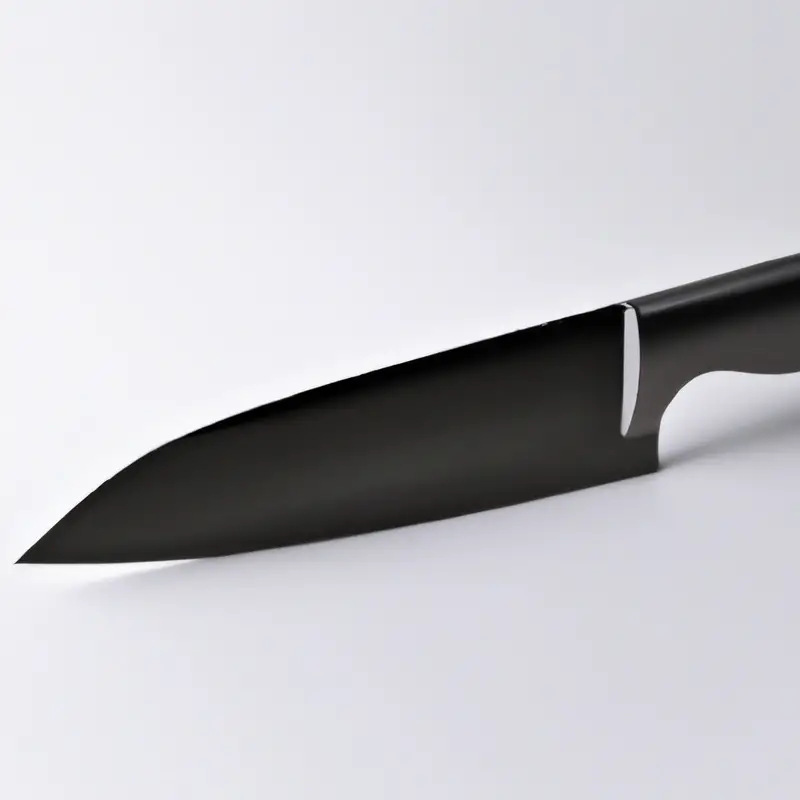
Getting to Know the Handle: Comfort and Grip
The handle of a Santoku knife is an essential factor in its comfort and grip. The handle should be of the right size for your hand and have a comfortable grip.
A comfortable grip on the handle is crucial to avoid injury and ensure safety while chopping.
The handle material should also provide sufficient grip, even if your hand becomes wet during use. The handle’s weight should be balanced to the blade’s weight, providing optimal control and ease of use.
The handle can be either full-tang or partial-tang, with the full-tang providing greater strength and durability.
When choosing a Santoku knife, it is advisable to hold and feel the handle for comfort and grip before purchasing. Handles made from materials like plastic, rubber, and wood with non-slip textures or ergonomic shapes are ideal for optimal grip and control.
Proper grip and comfort will make using a Santoku knife more enjoyable and efficient, enabling beginners to develop their skills and gain confidence.
Choosing the Best Santoku Knife: Factors to Consider
Choosing the best Santoku knife requires consideration of several factors. Here are some essential factors to consider:
- Blade Material: High-quality Santoku knives are made from Damascus, VG-10, or high-carbon stainless steel. These materials offer durability, resistance to corrosion and rust, and excellent cutting performance.
- Blade Size: Santoku knives typically range from 5 to 7 inches in length. Consider your hand size and the types of food you will be cutting to choose the right blade length.
- Blade Shape: Santoku knives may feature a granton edge, hollow edge, or straight edge. A granton edge features small divots on the blade to reduce food sticking, while a hollow edge creates air pockets to prevent food from sticking. A straight edge is perfect for precise cuts.
- Handle Design: A comfortable grip is crucial when using a Santoku knife. Handles made of durable materials like Pakkawood or Micarta offer excellent grip and comfort.
- Price: Consider your budget when choosing a Santoku knife. Prices may range from $30 to $300, depending on quality and brand.
Taking the time to consider these factors will ensure you choose a Santoku knife that fits your needs and provides excellent performance.
How to Properly Hold and Use a Santoku Knife
To properly hold and use a Santoku knife, grasp the handle with a firm but relaxed grip, ensuring that your fingers are wrapped around the handle and the blade is secure. Keep your fingers away from the blade’s edge and use your other hand to hold the food you are cutting steadily.
Use a rocking motion to cut through food, making sure that you are using the full length of the blade to achieve even slices.
Remember to keep the blade sharp by honing it regularly and sharpening it when necessary. With these techniques, beginners can effectively use a Santoku knife to prepare a wide range of dishes.
Care and Maintenance: Keeping the Blade Sharp
Keeping a sharp blade is essential for any knife, including Santoku knives. Dull blades can cause accidents and make it difficult to cut through various ingredients.
To maintain blade sharpness, avoid placing the knife in the dishwasher and always hand wash it with warm soapy water.
Dry the blade immediately to prevent corrosion, and avoid chopping on hard surfaces like glass or marble. Use a honing steel to straighten the blade’s edge before use, and sharpen it regularly with a whetstone or sharpening system.
Remember to angle the blade accordingly and ensure even sharpening.
With proper care and maintenance, a Santoku knife can last for years and provide reliable performance.
Popular Brands of Santoku Knives for Beginners
Some popular brands of Santoku knives suitable for beginners include:
- Victorinox Fibrox Pro Santoku Knife – known for its ergonomic handle and razor-sharp blade.
- Wüsthof Pro Hollow-Edge Santoku Knife – favored by many professional chefs, this knife has a comfortable handle and a versatile blade.
- Shun Classic Blonde Santoku Knife – this knife is made with high-quality materials and has a sharp, durable blade.
- Global G-48 Santoku Knife – made with lightweight and durable materials, this knife is easy to handle and provides precise cuts.
- Mercer Culinary Millennia Santoku Knife – affordable and easy to maintain, this knife has a comfortable handle and a sharp blade.
When choosing a Santoku knife, it’s essential to prioritize quality and durability. Look for reputable brands that use high-quality materials and offer a comfortable grip.
Keep in mind that different knives may have different blade angles, lengths, and weights, so it’s important to consider your personal preferences and cooking needs.
Common Mistakes to Avoid When Using Santoku Knives
Common Mistakes to Avoid When Using Santoku Knives:
- Using a chopping motion: The Santoku knife is designed for slicing rather than chopping. Avoid using a chopping motion to prevent damaging the blade and losing its sharpness.
- Applying too much pressure: It’s important to let the weight of the knife do the work and avoid applying too much pressure on the blade. This can lead to decreased control and potentially cause injury.
- Cutting on improper surfaces: Avoid cutting on hard surfaces like granite or glass, as this can damage the blade. Stick to softer cutting boards made of wood or plastic.
- Not honing the blade: Regular honing helps to maintain sharpness and prevent damage to the blade. Neglecting to hone the blade can lead to dullness and decreased cutting ability.
- Improper storage: Leaving the knife in a cluttered drawer or not protecting the blade can cause damage and decrease the lifespan of your Santoku knife. Store it in a knife block or protective sleeve to keep the blade safe.
By avoiding these common mistakes, beginners can easily get the hang of using a Santoku knife and enjoy its benefits for years to come.
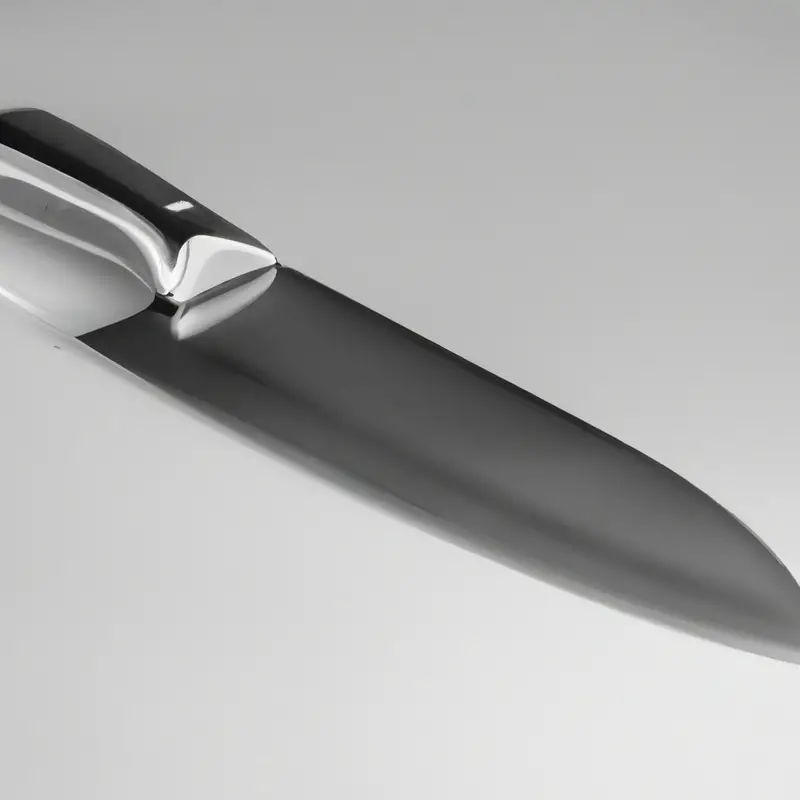
Using Santoku Knives for Different Cooking Styles and Techniques
Santoku knives are versatile tools that can be used for different cooking styles and techniques. Their design allows for precision cutting, whether you’re slicing, dicing, or chopping vegetables, fruits, or meats.
When using a Santoku knife, it’s important to keep the blade perpendicular to the cutting surface and to use a rocking motion when cutting through ingredients.
This allows for consistent and efficient cuts without damaging the blade or the food. Additionally, Santoku knives work well for intricate cuts like julienning, mincing, and chiffonading.
Their sharp blades make it easier to work with delicate ingredients, such as herbs and spices, without crushing them.
One advantage of Santoku knives is their ability to handle different textures of food. They can easily cut through hard ingredients like root vegetables and soft ingredients like tomatoes and berries.
To fully utilize the Santoku knife’s versatility, it’s important to choose the right blade length.
Shorter blades work best for smaller or more delicate foods, while longer blades are ideal for larger and tougher ingredients. When using a Santoku knife, always follow proper cutting techniques and take care of the blade for optimal performance.
With practice and patience, beginners can master the art of using Santoku knives to enhance their culinary skills.
Final Verdict
Santoku knives may seem intimidating at first, but they are actually an excellent choice for beginners due to their versatility, comfort, and ease of use. This Japanese-style knife can handle a wide range of tasks in the kitchen, from slicing and dicing vegetables to preparing meat and fish.
By understanding its unique features and proper usage, any home cook can become proficient with a Santoku knife.
It’s important to choose a high-quality blade, practice proper grip and technique, and invest in regular maintenance to keep the knife sharp and efficient. With the right tools and knowledge, anyone can elevate their cooking skills and enjoy the benefits of using a Santoku knife.
Trust in the value of this versatile kitchen tool and take your culinary creations to the next level.


